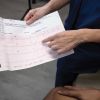The Importance of Cardiovascular Exercise in Heart Disease Recovery
Recovering from heart disease can be a daunting process, but it is also an opportunity to significantly improve your overall health. One of the most effective ways to speed up the recovery process is through cardiovascular exercise. But how does this exercise help, and what role does it play in heart disease recovery? In this article, we explore the benefits of cardiovascular exercise, how it contributes to heart disease recovery, and how you can start incorporating it into your routine.

1. What is Cardiovascular Exercise?
Cardiovascular exercise, often referred to as aerobic exercise, includes activities that increase your heart rate and improve your body’s ability to use oxygen. These exercises strengthen the heart and lungs, improving overall circulation. Common cardiovascular exercises include walking, running, swimming, cycling, and dancing. The goal of these exercises is to increase your heart rate and promote endurance, ultimately benefiting your cardiovascular health.
Atlanta Heart Specialists
atlanta heart specialists
4375 Johns Creek Pkwy #350, Suwanee, GA 30024, USA

2. The Role of Cardiovascular Exercise in Heart Disease Recovery
When recovering from heart disease, cardiovascular exercise is a cornerstone of rehabilitation programs. It helps rebuild strength and function in the heart, which can be compromised after a heart attack or surgery. Regular cardiovascular activity can:
- Reduce the risk of further heart complications
- Lower blood pressure
- Improve cholesterol levels
- Enhance circulation and oxygen delivery throughout the body
- Help in weight management, reducing strain on the heart
Doctors and rehabilitation programs often recommend starting with low-intensity activities and gradually increasing the duration and intensity as the patient’s strength improves. This ensures a safe and gradual return to regular activity levels.
3. Benefits of Cardiovascular Exercise for Heart Health
Cardiovascular exercise not only helps in the recovery process but also provides long-term health benefits. Some of these include:
- Improved Heart Function: Regular exercise can enhance the heart's pumping efficiency, improving overall cardiovascular health.
- Improved Circulation: It helps to enhance blood flow to vital organs, reducing the likelihood of complications like clot formation.
- Weight Loss: Exercise helps in burning calories, which aids in weight loss and decreases the burden on the heart.
- Lower Stress: Exercise is known to reduce stress and anxiety levels, contributing to better mental health.
4. How to Start Incorporating Cardiovascular Exercise into Your Routine
Starting a cardiovascular exercise regimen after heart disease or surgery should always be done under the guidance of a healthcare provider. Your doctor will assess your current heart function and design a tailored plan. Some general tips for getting started include:
- Begin Slowly: Start with low-impact activities like walking or stationary cycling for short durations.
- Set Realistic Goals: Gradually increase the intensity and duration of your workouts, aiming for 30 minutes of moderate exercise most days of the week.
- Monitor Your Progress: Keep track of your heart rate during exercise to ensure it stays within safe limits.
- Rest as Needed: Don’t overexert yourself—rest when needed, and don’t push too hard, especially in the beginning.
5. Case Studies: Real Stories of Cardiovascular Exercise in Recovery
Real-life examples can be inspiring when considering how cardiovascular exercise can make a difference in heart disease recovery. Take, for example, John, a 58-year-old man who experienced a mild heart attack. Under the guidance of his cardiologist, John began incorporating light walking into his routine. Over the next few months, he gradually increased his activity level and was soon able to resume cycling. Not only did he lose weight, but his cholesterol levels and blood pressure significantly improved.
John’s success story is not unique. Many patients who commit to cardiovascular exercise as part of their recovery plan experience improved outcomes, faster rehabilitation, and a lower risk of future heart issues.
6. Best Cardiovascular Exercises for Heart Disease Recovery
The best types of cardiovascular exercises for heart disease recovery are those that provide steady, low-impact movement. Some excellent choices include:
- Walking: One of the simplest yet most effective exercises for heart health.
- Swimming: A low-impact activity that provides full-body exercise and is easy on the joints.
- Stationary Biking: Allows for controlled cardiovascular activity with minimal risk of injury.
- Elliptical Training: Provides a full-body workout while being easy on the knees and joints.
7. How to Maintain Motivation During Heart Disease Recovery
Staying motivated to exercise during recovery can be challenging, but it’s vital for ongoing health. Here are a few strategies:
- Set small, achievable goals: This will help you stay on track without feeling overwhelmed.
- Join a support group: Sharing experiences with others going through similar situations can boost motivation.
- Track your progress: Keep a journal or use an app to monitor improvements, whether it’s in distance, time, or energy levels.
Conclusion
Cardiovascular exercise plays a crucial role in the recovery process for heart disease patients. It not only helps in physical recovery but also improves overall heart health, boosts mood, and contributes to a longer, healthier life. Always consult your healthcare provider before starting a new exercise program, and take it slow to ensure a safe and effective recovery.
For personalized advice and guidance on incorporating cardiovascular exercise into your recovery plan, consider visiting HeartCare Hub, where we offer resources and professional support for heart disease rehabilitation.





















Deborah Heart and Lung Center
deborah heart and lung center
200 Trenton Rd, Browns Mills, NJ 08015, USA